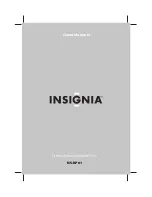
ESAB ES 95i
Manual 0-5458
4-9 OPERATION
Art # A-07707
Figure 4-22: Principle of presetting
Art # A-07708
B
Preheat
Preheat
Dotted lines show effect if no preheat is used
Weld
C
Figure 4-23: Reduction of distortion by preheating
Art # A-07709
Figure 4-24: Examples of distortion
Art # A-07710_AB
1
Block Sequence.
The spaces between the welds are
filled in when the welds are cool.
2
3
Figure 4-25: Welding sequence
shape exerts a strong pull on adjacent metal. Several things can
then happen.
The metal in the weld area is stretched (plastic deformation),
the job may be pulled out of shape by the powerful contraction
stresses (distortion), or the weld may crack, in any case, there
will remain “locked-up” stresses in the job. Figures 4-20 and 4-
21 illustrate how distortion is created.
Art # A-07705_AB
Hot
Hot
Weld
Upsetting
Expansion with
compression
Cool
Figure 4-20: Parent metal expansion
Art # A-07706_AC
Weld
Permanent Upset
Contraction
with tension
Figure 4-21: Parent metal contraction
4.21 Overcoming Distortion Effects
There are several methods of minimizing distortion effects.
A. Peening
This is done by hammering the weld while it is still hot. The weld
metal is flattened slightly and because of this the tensile stresses
are reduced a little. The effect of peening is relatively shallow,
and is not advisable on the last layer.
B.
Distribution of Stresses
Distortion may be reduced by selecting a welding sequence
which will distribute the stresses suitably so that they tend to
cancel each other out. See Figures 4-25 through 4-28 for various
weld sequences. Choice of a suitable weld sequence is probably
the most effective method of overcoming distortion, although an
unsuitable sequence may exaggerate it. Simultaneous welding
of both sides of a joint by two welders is often successful in
eliminating distortion.
C.
Restraint of Parts
Forcible restraint of the components being welded is often used
to prevent distortion. Jigs, positions, and tack welds are methods
employed with this in view.
D. Presetting
It is possible in some cases to tell from past experience or to
find by trial and error (or less frequently, to calculate) how much
distortion will take place in a given welded structure. By correct
pre-setting of the components to be welded, constructional
stresses can be made to pull the parts into correct alignment. A
simple example is shown in Figure 4-22.
E. Preheating
Suitable preheating of parts of the structure other than the area
to be welded can be sometimes used to reduce distortion. Figure
4-23 shows a simple application. By removing the heating source
from b and c as soon as welding is completed, the sections b and
c will contract at a similar rate, thus reducing distortion.
Summary of Contents for ES 95i
Page 6: ......
Page 38: ...ESAB ES 95i APPENDIX A 4 Manual 0 5458 This Page Intentionally Blank...
Page 39: ......












































